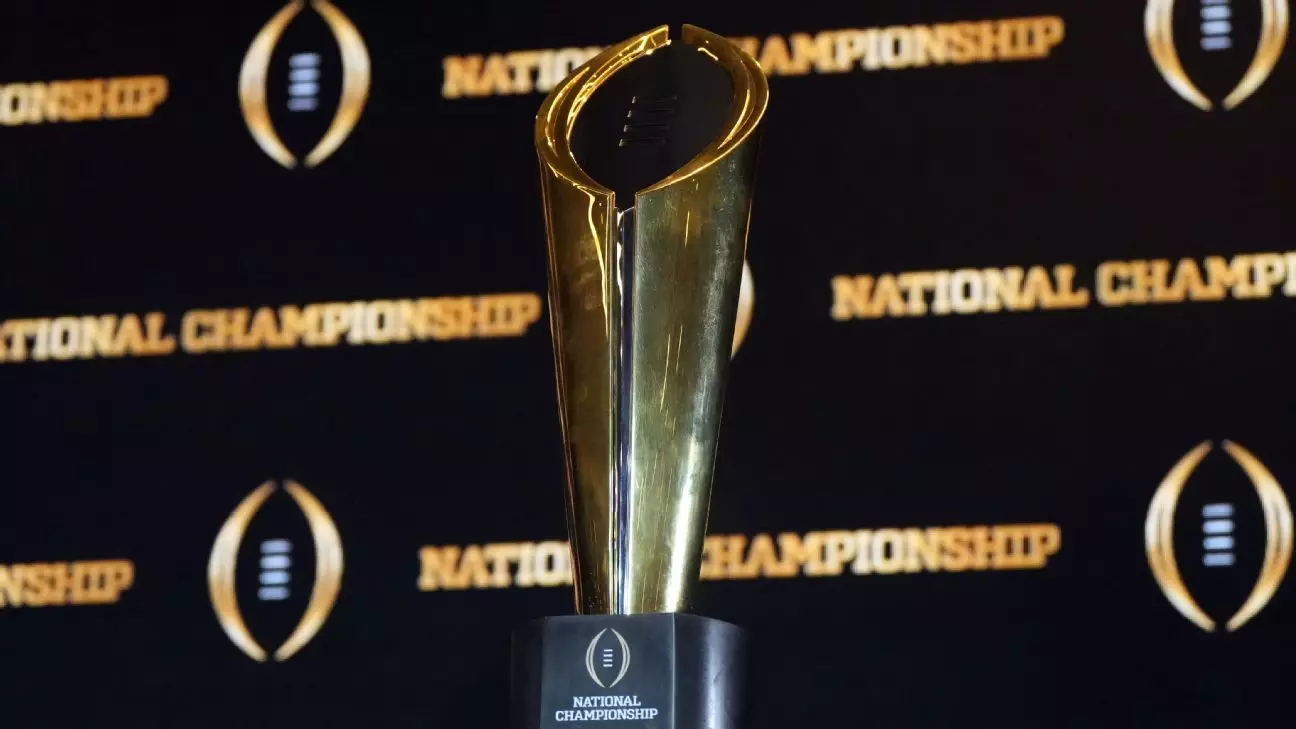The College Football Playoff (CFP) system, a cornerstone of collegiate sports, often finds itself at the center of scheduling controversies. A recent incident has sparked debates, showcasing the intricate balance between logistical planning and athlete welfare. SEC commissioner Greg Sankey’s request to alter the scheduling of the Goodyear Cotton Bowl Classic and the Capital One Orange Bowl failed, emphasizing the complexity behind holiday bowl games.
Scheduling in college football is far more than a simple calendar exercise. The timing of these games affects not just the teams participating but also the fans, media, and entire communities surrounding these events. Sankey’s concerns, articulated to the public, centered around potential inequities posed to Notre Dame following their victory over Georgia in the Allstate Sugar Bowl. Unlike Penn State, which had a longer recovery period after playing on New Year’s Eve, Notre Dame faced a compressed timeline. This raises questions about fairness in a postseason structured to reward the best teams in the nation, forcing the question: how can the CFP ensure competitive balance?
Disparities in preparation time due to scheduling can materially impact game performance. Penn State’s ample recovery period could confer a significant advantage, allowing for injury recovery and tactical refinements. The CFP’s inability to adapt to such situations exposes a critical flaw in their framework, highlighting a need for greater flexibility when unforeseen incidents occur.
On the other hand, the tragic events that transpired in New Orleans, resulting in loss of life and injuries, underscored the necessity of prioritizing safety. The decision to delay the Sugar Bowl by approximately 18 hours was a necessary precaution amidst chaos, providing crucial time for officials to ensure the security of all those involved. CFP executive director Rich Clark noted that maintaining safety takes precedence in these tumultuous scenarios.
This leads to the pressing concern over the amount of notice and resources available when crises arise. In fast-moving situations, where time is of the essence, decision-makers must be equipped with the authority and flexibility to respond efficiently. In light of these recent tragedies, the necessity of robust contingency planning becomes evident—not just for the sake of the schedule, but for the lives interwoven with the event.
When contemplating the ramifications of such scheduling decisions, it’s essential to involve broader stakeholders, especially fans who invest significant time, money, and emotion into their teams. Sankey revealed that logistical nightmares arise from the need to accommodate communities already solidified in plans surrounding these events. When games are placed on a pre-established framework, modifying them disrupts everything from hotel reservations to travel arrangements.
This interplay between fan engagement and operational realities accentuates another layer of complexity in scheduling college football games. The importance of identifying these potential conflicts before establishing a postseason calendar cannot be understated. Sankey’s reflections on community ties indicate that a more inclusive approach to scheduling may benefit everyone involved.
Looking forward, the challenges faced during this postseason reflect a larger trend within college athletics. The balance between tradition, competitive fairness, and operational safety must be continuously evaluated. With renewed scrutiny on the scheduling processes, there might be calls for reforming not only how bowl games are scheduled but also how decisions are made in times of crisis.
The question that looms large is whether the CFP will heed this pivotal moment to innovate. As collegiate sports continue to evolve, addressing such issues will be critical in both preserving the integrity of the game and safeguarding the welfare of everyone involved. Creating a more adaptable schedule that considers the unpredictable nature of life and safety could enhance the overall experience for players, fans, and the communities that rally behind their teams.
The current landscape of college football is fraught with complexities that require thoughtful solutions. The College Football Playoff must strive to find a path that considers competitive fairness, safety, and community engagement, ensuring that the spirit of the game remains intact amidst the chaos of scheduling conflicts.

Leave a Reply